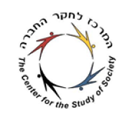Duration of Research: 2011-2015
Funding Agency: Israel Science Foundation (ISF)
Researcher: Chaya Koren (P.I.)
Scientific Abstract
Second couplehood in old age is an emerging phenomenon in recent years due to the increase in life expectancy, and subsequent increase in the number of older persons remaining single because of widowhood or divorce. Most studies were conducted within western societies characterized by a culture of modernity, with few studies relating to eastern or far eastern societies characterized by a traditional culture. Most studies relate to gender differences from an individual perspective of the older persons engaged in second couplehood in old age. Studies examining the perspectives other than the older people themselves such as their offspring are very scarce. In addition, very few studies have related to a wide diversity of demographic variables such as ethnicity, religiosity and socio-economic background in order to capture a multi-cultural perspective of the phenomenon. A previous study conducted by the author focused on the meaning of second couplehood in old age using the dyad as the unit of analysis.
The purpose of the proposed study is to describe and examine second couplehood in old age from an intergenerational and a multi-cultural perspective to further enhance understandings of the phenomenon, and of older persons and their families within a diverse and changing social and cultural context such as the Israeli society.
The proposed study will be performed within a qualitative paradigm and aims to include 15-20 intergenerational families (6 members each; 90-120 participants) from diverse ethnic, religious, and socio-economic backgrounds, who are experiencing second couplehood in old age that was created by men at the age of 67+ and women at the age of 62+, due to widowhood or divorce, and who have previously raised families including children and grandchildren. Theory-based sampling according to the above criteria will be used to recruit participants. Each research unit of the extended intergenerational family will include six members; two older spouses, one grownup child and one grandchild of each spouse. The final number of units and participants accordingly, will be determined by the principles of theoretical saturation. A grounded theoretical method will be derived from data analysis which will take into account the multiple perspectives of the participants from the extended family and as such will provide both an intergenerational and multi-cultural perspective.
Such an approach will enable a better understanding of the phenomenon of second couplehood in old age, and to learn more about the dynamics of intergenerational relationships in late life from the perspective of three generations in a social context located between modernity and traditionalism.

